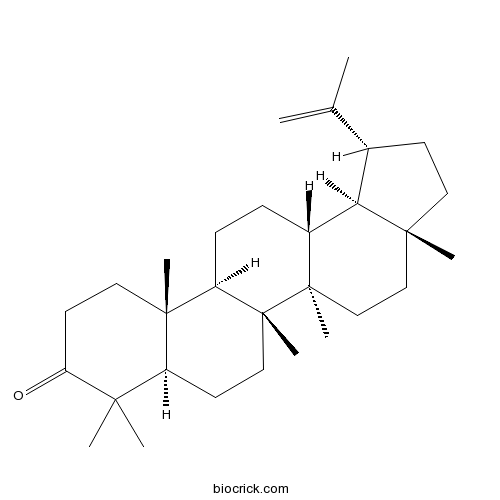Casuarina equisetifolia
Casuarina equisetifolia
1. The products in our compound library are selected from thousands of unique natural products; 2. It has the characteristics of diverse structure, diverse sources and wide coverage of activities; 3. Provide information on the activity of products from major journals, patents and research reports around the world, providing theoretical direction and research basis for further research and screening; 4. Free combination according to the type, source, target and disease of natural product; 5. The compound powder is placed in a covered tube and then discharged into a 10 x 10 cryostat; 6. Transport in ice pack or dry ice pack. Please store it at -20 °C as soon as possible after receiving the product, and use it as soon as possible after opening.
Natural products/compounds from Casuarina equisetifolia
- Cat.No. Product Name CAS Number COA
-
BCN1717
Lupenone1617-70-5
Instructions

The advantages of using drones over space-borne imagery in the mapping of mangrove forests.[Pubmed: 30020959]
Satellite data and aerial photos have proved to be useful in efficient conservation and management of mangrove ecosystems. However, there have been only very few attempts to demonstrate the ability of drone images, and none so far to observe vegetation (species-level) mapping. The present study compares the utility of drone images (DJI-Phantom-2 with SJ4000 RGB and IR cameras, spatial resolution: 5cm) and satellite images (Pleiades-1B, spatial resolution: 50cm) for mangrove mapping-specifically in terms of image quality, efficiency and classification accuracy, at the Setiu Wetland in Malaysia. Both object- and pixel-based classification approaches were tested (QGIS v.2.12.3 with Orfeo Toolbox). The object-based classification (using a manual rule-set algorithm) of drone imagery with dominant land-cover features (i.e. water, land, Avicennia alba, Nypa fruticans, Rhizophora apiculata and Casuarina equisetifolia) provided the highest accuracy (overall accuracy (OA): 94.0±0.5% and specific producer accuracy (SPA): 97.0±9.3%) as compared to the Pleiades imagery (OA: 72.2±2.7% and SPA: 51.9±22.7%). In addition, the pixel-based classification (using a maximum likelihood algorithm) of drone imagery provided better accuracy (OA: 90.0±1.9% and SPA: 87.2±5.1%) compared to the Pleiades (OA: 82.8±3.5% and SPA: 80.4±14.3%). Nevertheless, the drone provided higher temporal resolution images, even on cloudy days, an exceptional benefit when working in a humid tropical climate. In terms of the user-costs, drone costs are much higher, but this becomes advantageous over satellite data for long-term monitoring of a small area. Due to the large data size of the drone imagery, its processing time was about ten times greater than that of the satellite image, and varied according to the various image processing techniques employed (in pixel-based classification, drone >50 hours, Pleiades <5 hours), constituting the main disadvantage of UAV remote sensing. However, the mangrove mapping based on the drone aerial photos provided unprecedented results for Setiu, and was proven to be a viable alternative to satellite-based monitoring/management of these ecosystems. The improvements of drone technology will help to make drone use even more competitive in the future.
Frankia irregularis sp. nov., an actinobacterium unable to nodulate its original host, Casuarina equisetifolia, but effectively nodulates members of the actinorhizal Rhamnales.[Pubmed: 30010524]
None
Molecular Detection and Genetic Diversity of Casuarina Moth, Lymantria xylina (Lepidoptera: Erebidae).[Pubmed: 29912410]
The casuarina moth, Lymantria xylina Swinhoe (Lepidoptera: Erebidae), is an important pest in the Australian pine tree, Casuarina equisetifolia, forest in the coastal area of South China. At the same time, as a closely related species of Lymantria dispar L. (Lepidoptera: Erebidae), it is also a potential quarantine pest. In the present study, specific primers were designed for identification of L. xylina based on the COI barcoding sequence between L. xylina and four other common forest pests. A 569-bp fragment was successfully amplified from 40 L. xylina from five geographical populations in four Chinese provinces. In addition, even through the analysis came from five highly diverse populations of L. xylina, the genetic distances ranged from 0.001 to 0.031. The neighbor-joining tree showed that the species from Hubei and Chongqing were clustered within a distinct group.
Permanent Draft Genome Sequence of Frankia sp. Strain BR, a Nitrogen-Fixing Actinobacterium Isolated from the Root Nodules of Casuarina equisetifolia.[Pubmed: 27635010]
Frankia sp. strain BR is a member of Frankia lineage Ic and is able to reinfect plants of the Casuarinaceae family. Here, we report a 5.2-Mbp draft genome sequence with a G+C content of 70.0% and 4,777 candidate protein-encoding genes.


